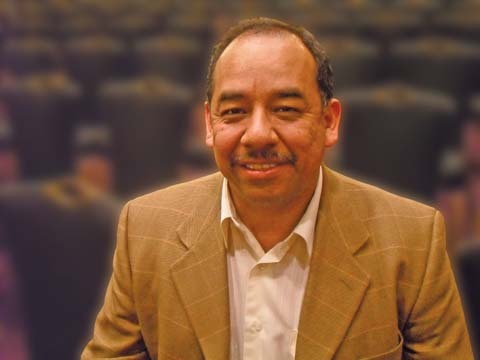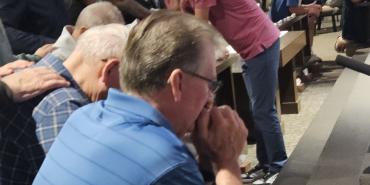Serving in Mexico City

Ely Camas Pérez, a third-generation Nazarene lives in Mexico City where he is superintendent of the Mexico Central District. Born and raised in the state of Chiapas, Mexico, he serves on the denomination's General Board and is past president of the church's National Board of Mexico where he dealt with high government officials. Ely and his wife, Betsabe, an ordained elder in the Church of the Nazarene, are parents to a daughter, Betsabe, and son, Jonatan.
What would HT readers be surprised to learn about you?
I like to cook. I've been the cook at a youth camp for 1,000 kids.
Favorite food?
Tacos.
What is it like to serve in one of the world's largest cities?
One of the advantages is there are people from all over Mexico. They go to church, stay for a while, and then return to their home towns. For example, they may come to work or study and attend a Nazarene church here and then return home. Also, pastors have to make a bigger effort to reach people since the population is more diverse, educated, and cosmopolitan.
Best thing about being a district superintendent?
Being able to have an influence with pastors and youth so they can develop a church ministry.
Best thing about your district?
The Church of the Nazarene has an acknowledgment from the government for being a church with a serious doctrine and one that doesn't generate conflict between institutions. Also, many young people are responding to the ministry.
Greatest challenges on the district?
To reach youth. In the area comprising our district, we have about 30 million people, and about 50 percent of those are youth (ages 12-24).
To keep pastors in areas where drug cartels are dealing, and where abductions and murders are more frequent. Some churches are affected by this more than others. Recently one of our youth was kidnapped, and a Nazarene church was affected when gang members entered during a service and robbed everyone in the congregation. In some areas of the city, it is not safe to go from one area to another, or even to go from home to church after 7:00 p.m.
To help young people stand for Truth. A cult that includes many drug dealers is gaining popularity. The youth are especially affected by this because they're attracted to that culture.
How is the Church of the Nazarene effective there?
It is being effective now in that it has changed the traditional form of worship. Also, we are now using newer systems of evangelization. For example, we're having home groups rather than having people at church, since people can only go to church on Sunday mornings. So most of the work is done during the week in homes, and we have had to develop and train leaders for this.
The ministries in the homes are diverse-some are Bible studies, others watch a biblical documentary and discuss it, others develop family support and aid such as counseling. Due to the fact that it is a large city, many decaying family structures are present. Now, people are more receptive to family counseling. The church is there to offer support addressing specific needs within the congregation.
Best thing about your wife?
Her commitment to God and tolerance of me.
Favorite author?
Dennis Kinlaw.
What do you do to relax?
I get out of the city.
Looking ahead 10 years, where do you see the Church of the Nazarene around Mexico City?
Serving a postmodern church with a totally different model of what the church is today. For that, we have been preparing the youth with the concept of a new and emerging church. In Mexico, holiness in a lot of regions is treated as form and tradition, not necessarily a lifestyle. I believe holiness has a lot more to do with one's inner being.
Habit you'd like to change?
I'm compulsive with punctuality. I'd like to be more tolerant.
Dream destination?
Switzerland.
How many churches are on the district?
63.
How many Nazarene districts are there in Mexico?
15.
Life motto?
If you want to serve better, you need to always be prepared.
Greatest fear?
To not do what God expects me to do.
What tourist attractions do you show to visitors?
The pyramids at Teotihuaca, the Xochimilco canals, and the historic Plaza de las Tres Culturas (Plaza of Three Cultures). The latter represents three cultures: Pre-Hispanic, colonial, and contemporary.
Favorite music?
Classical, but a little of everything.
Do you engage with social networking?
Yes-Facebook, Twitter.
Holiness Today, November/December 2011
Please note: This article was originally published in 2011. All facts, figures, and titles were accurate to the best of our knowledge at that time but may have since changed.




